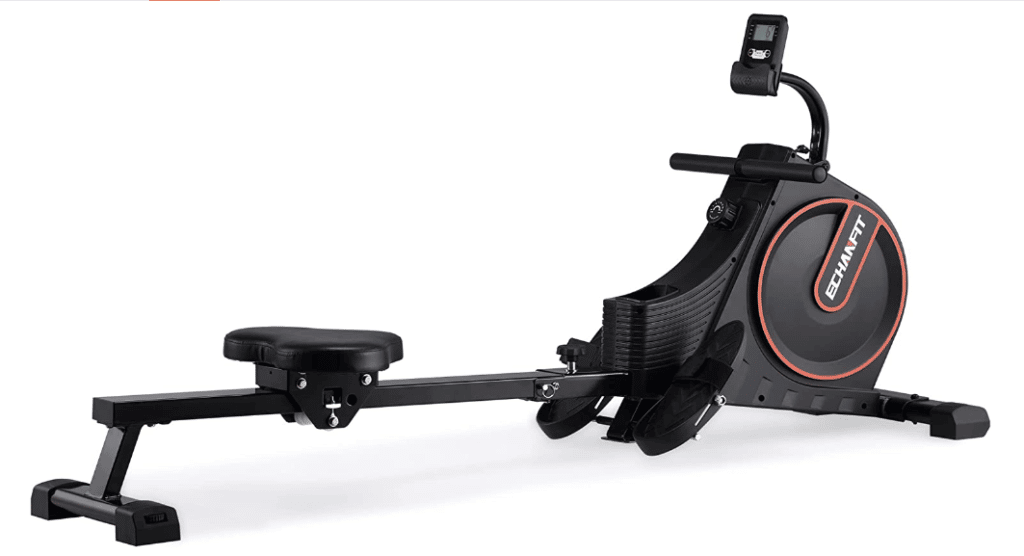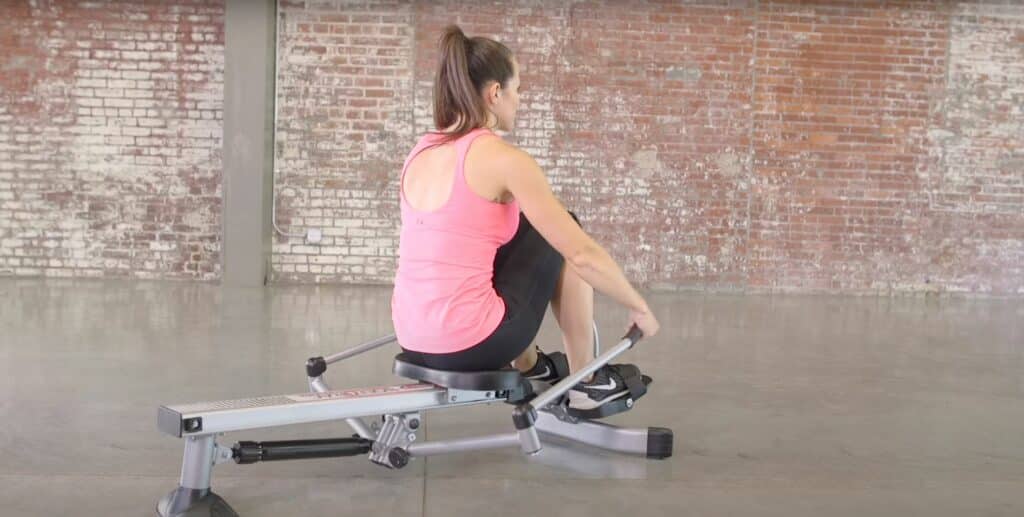Whether you’re considering starting rowing as a form of exercise or you’re an experienced rower looking to add your own machine to your home gym, it’s beneficial to understand the different types of rowing machines.
Not all rowers are created equal. While there are certain types that are more commonplace, if you’re considering investing in one yourself, it’s a good idea to study each one and compare it to the others, so you can select one that’s right for your needs.
Here’s a detailed comparison of the 5 different types of rowing machines, including pros and cons of each, as well as our thoughts on which one is best.
Jump to:
The 5 Types of Rowing Machines
The type of rowing machine you choose to use can make a difference, not only to your performance, but also to the comfort of the experience. They can all provide a full-body workout and can boost your fitness level significantly if you use them the right way.
Let’s compare the 5 different types of rowing machines so you can get an idea of which is which.
Based on our testing, this is the best rower for beginners. For less than 500$, this silent water rower will last you for years. It also comes with a 12-year warranty.
- Affordable
- Quiet
- Amazing warranty
Air Resistance Rowing Machines
Air resistance rowers use a flywheel which turns as you pull on the handle. An air rower can also be known as a flywheel rowing machine.
It’s the most common type of rower, and is often found in gyms. You may know the Concept2, which is one of the most popular air rowers on the market right now.

As you pull, air flows through the flywheel and creates resistance. The harder you row, the more air flows into the wheel, creating more resistance.
However, there’s also a damper on the flywheel, which is a sort of shutter that can control the amount of air flowing into the wheel. You can also use this to control the resistance to an extent.
Air rowing machines have quite a natural feeling, similar to outdoor rowing. Flywheel rowers are, however, one of the louder types of rowing machines.
Pros
- They generally have a small footprint and many are foldable
- Natural feeling, similar to rowing on the water
- Adjustable resistance that also increases the harder you row
- Most common rowing machines found in gyms
Cons
- They can be loud, especially for home use
- These types of rowers can be expensive
- Slightly high-maintenance as dust can get into the flywheel
Water Resistance Rowing Machines
Water-resistance rowers offer the closest feeling you can get to rowing on the water. It uses water in a large tank to create resistance against two paddles—just like real oars.
The most well-known of the water rowing machines is the well-named WaterRower, which is the gold standard for this kind of rowing machine.

As you pull, the paddles move through the water and create drag. This creates a soothing swishing sound as you row, which many people enjoy, especially if they’re used to rowing on the real water. It also has a great smooth action on the rowing stroke.
There’s no easy way to adjust the resistance on this kind of rower. You either need to change the water level in the tank—which isn’t easy on home machines and can’t be done at the gym—or you simply row harder, which creates more resistance.
Make sure that you don’t leave your water rower in the sun, as algae can form in the water and damage water tanks.
Pros
- Similar sound and feel to rowing on the water
- Easy to maintain using water purifying tablets
- Provides a satisfying water swishing sound as you row
- Despite the sound, it’s fairly quiet for home use
Cons
- Not easy to adjust the level of resistance other than rowing harder
- Many water rowers are unable to fold, so take up quite a bit of space
- They can be a fairly expensive option
Magnetic Rowing Machines
Magnetic rowers also use a flywheel, but they work differently to air rowers. The flywheel is made of metal, and it uses magnets that move closer to and further from the flywheel to create resistance.
As the resistance is frictionless, a magnetic resistance rower is the quietest one you will find. Its low noise levels are perfect for home use if you want to row without disturbing others in the house.

Magnetic resistance rowing machines are also usually more compact than others and thanks to their closed design, don’t require a lot of cleaning or maintenance. Some can also fold in order to be packed away when not in use.
However, these kinds of rowing machines have the least authentic feel, so if you want to feel like you’re doing actual rowing on water, this might not be the one for you.
Pros
- These machines are extremely quiet and great for home use
- Multiple adjustable resistance levels
- Compact design and many are foldable
- Fairly affordable price range
Cons
- Doesn’t feel like rowing on the water
Hybrid Rowing Machines
Hybrid rowing machines are less common than others. They use a combination of both air resistance and magnetic resistance. This has a lot of advantages, providing the best of both kinds of rowers.
They offer a highly adjustable range of resistance, plus it increases the harder you row. You also get a more realistic rowing feeling, thanks to the friction of the air resistance.
Pros
- Best of both worlds
- Highly adjustable resistance settings
- Resistance increases with more power
- Realistic rowing feeling
- Remain fairly quiet for home use
Cons
- Less common and may be harder to find
- Might be more expensive than others
Hydraulic Rowing Machines

The hydraulic rowing machine uses pistons attached to handles. You can adjust the resistance to an extent, using clamps or resistance levels, depending on the machine.
The force is created by pulling against fluid in each hydraulic piston. Unfortunately, the more you row, the hotter the fluid gets. As it heats up, it provides less resistance.
You may notice that these kinds of rowers look old-fashioned in comparison to some of the modern-looking ones, but they still do a good job and provide an effective workout.
Based on our testing, this is the best rower for beginners. For less than 500$, this silent water rower will last you for years. It also comes with a 12-year warranty.
- Affordable
- Quiet
- Amazing warranty
The two-handled design of the hydraulic machine may give it an authentic oar-like rowing motion, but the sensation of rowing isn’t as smooth as others.
But it does mean that you can do a one-armed row as well, if you want to target one side more than the other to fix muscle imbalances.
You may also often find them outdoors, as well as coming in indoor rowing machine varieties. The indoor rowers are usually quite compact.
Pros
- Provides an effective rowing workout
- Authentic oar-like feeling
- Can do one-armed rows if necessary
- Quite compact and easy to move
Cons
- As the fluid in the pistons heats up, the resistance may change
- They require quite a bit of maintenance to stay in good condition
- The motion isn’t as smooth as other rowers
Which Type of Rower Is Best?
All rowers will provide a good muscular and cardio workout, so this depends on your personal preference. Here’s a quick overview:
- Air, if: You don’t mind some noise but want a smooth, adjustable workout.
- Water, if: You want an authentic water rowing feel and sound.
- Magnetic, if: You want a quiet rower with a lot of adjustment options.
- Hybrid, if: You want the best of both air and magnetic and can afford a slightly higher price tag.
- Hydraulic, if: You don’t mind older technology and want the most affordable option.
Ultimately, you can get a great workout no matter the type of rower, as long as you keep good form and intensity.
What Type of Rowing Machine Has the Most Resistance?
Hybrid rowing machines are often the best for resistance. They provide the high adjustable levels of magnetic rowers, plus the added resistance of air rowers, the harder you row.
Some magnetic rowing machines offer up to 16 different levels of resistance adjustability, which makes them ideal for rowers of all skill levels. However, they don’t provide more resistance the harder you row.
Air rowers provide good resistance, as you can choose your damper settings and it also creates more resistance the more power you put into your stroke.
Water rowers aren’t bad, but rely entirely on your own power to increase or decrease the resistance. Hydraulic rowers can vary dramatically depending on how warm the fluid is in their pistons.
If you want the best type of resistance possible, we recommend a hybrid rowing machine, closely followed by magnetic rowers and then air resistance machines.















